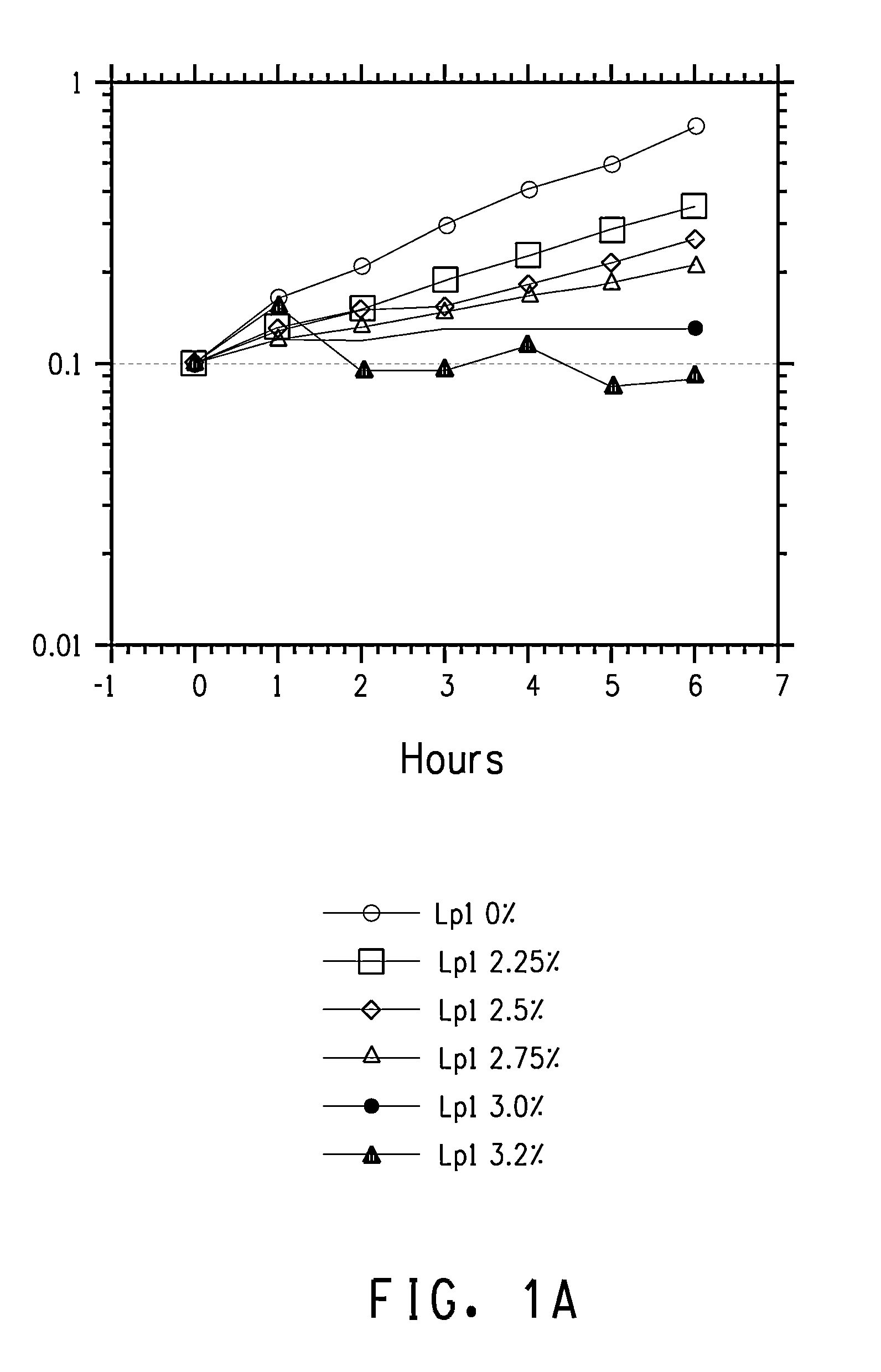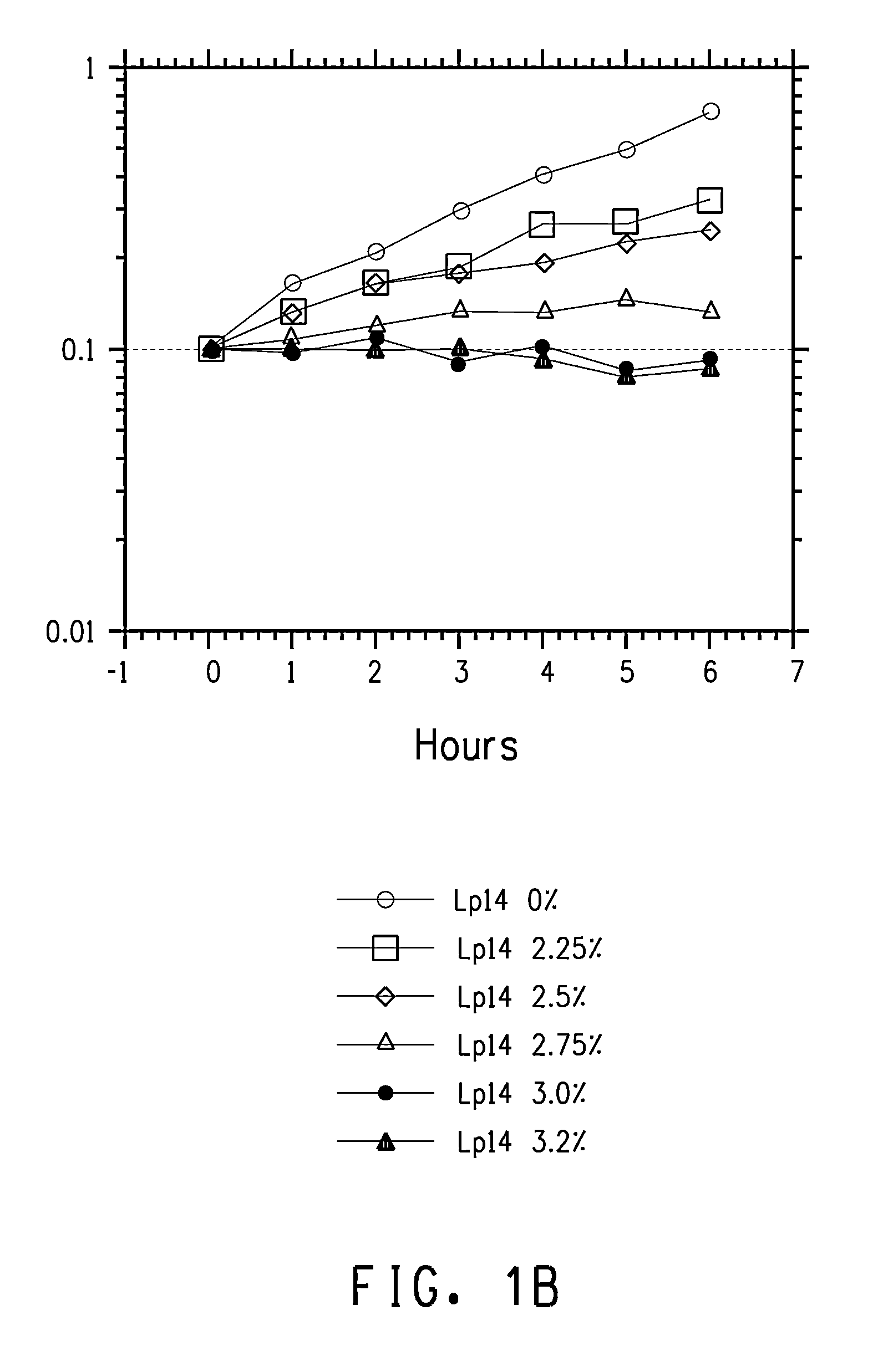Strain comprising increased expression of a CFA coding region for butanol production
a technology of coding region and butanol, applied in the field of microbiology and genetic engineering, can solve the problems of limited biological production of butanols, high cost, and general cost of petrochemical starting materials used in processing
- Summary
- Abstract
- Description
- Claims
- Application Information
AI Technical Summary
Benefits of technology
Problems solved by technology
Method used
Image
Examples
example 1
Constructions for Overexpresssion of cfa1 and cfa2 Genes in L. plantarum
[0227]To express genes in L. plantarum, a series of shuttle vectors derived from pFP996 were constructed. pFP996 (SEQ ID NO: 71) is a shuttle vector for gram-positive bacteria. It can replicate in both E. coli and gram-positive bacteria. It contains the origins of replication from pBR322 (nucleotides #2628 to 5323) and pE194 (nucleotides #43 to 2627). pE194 is a small plasmid isolated originally from a gram positive bacterium, Staphylococcus aureus (Horinouchi and Weisblum J. Bacteriol. (1982) 150(2):804-814). In pFP996, the multiple cloning sites (nucleotides #1 to 50) contain restriction sites for EcoRI, BglII, XhoI, SmaI, ClaI, KpnI, and HindIII. There are two antibiotic resistance markers; one is for resistance to ampicillin and the other for resistance to erythromycin. For selection purposes, ampicillin was used for transformation in E. coli and erythromycin was used for selection in L. plantarum.
[0228]Fi...
example 2
Overexpression of cfa1 or cfa2 Overexpression in L. plantarum and Effect Butanol Tolerance
FAME Analysis of L. plantarum PN0512 Transformant Strains
[0233]Lactobacillus plantarum strains PN2001, PN2003, PN2005, PN2010, PN2012, and PN2014 were grown and prepared for FAME as described in the General Methods section. The results for cultures grown in semi-synthetic medium lacking added fatty acids are shown in Table 10.
[0234]
TABLE 10Membrane composition of PN0512 transformant strains grownwithout added fatty acids.StrainPN2001PN2003PN2005PN2010PN2012PN2014Gene oncfa1cfa1cfa2cfa2nonenoneplasmidmembranefatty acidsC14:00.50.30.4C16:034.631.934.933.230.833.4C16:16.04.56.24.95.35.1C18:013.811.69.39.78.67.6C18:15.87.140.842.947.245.9cyc-C19:028.032.26.46.45.05.6
It is clear from this data that the strains with the cloned cfa1 gene converted a much higher percentage of the C18:1 fatty acid, cis-vaccenic acid, to the cyclopropane fatty acid (cyc-C19:0) derived from it, lactobacillic acid. Thus, s...
example 3
Overexpression of cfa in E. coli and Effect on Butanol Tolerance
[0243]Plasmid pDEW849 contains the E. coli cfa coding region under control of the trc promoter in a multicopy plasmid. To construct this plasmid, the cfa coding region was obtained by PCR amplification using chromosomal DNA from E. coli strain MG1655 as template and the primers cfa_sense and cfa_antisense (SEQ ID NOs:84, 85). The cfa_sense primer was designed so that when the amplified DNA is cloned into the pTrcHis2TOPO® vector (Invitrogen, Carlsbad, Calif.), an N-terminal fusion protein would not be formed and thus the native Cfa protein is expressed. The cfa_sense primer also has an EcoRI site that was used to determine orientation of the inserted DNA. The cfa_antisense primer was designed to contain the termination codon of cfa and thus the native Cfa protein is expressed, rather than a C-terminal fusion protein.
[0244]A 1165 bp PCR product was obtained from amplification reactions using ExTaq™ (TaKaRa) and the follo...
PUM
| Property | Measurement | Unit |
|---|---|---|
| temperature | aaaaa | aaaaa |
| temperature | aaaaa | aaaaa |
| temperature | aaaaa | aaaaa |
Abstract
Description
Claims
Application Information
 Login to View More
Login to View More - R&D
- Intellectual Property
- Life Sciences
- Materials
- Tech Scout
- Unparalleled Data Quality
- Higher Quality Content
- 60% Fewer Hallucinations
Browse by: Latest US Patents, China's latest patents, Technical Efficacy Thesaurus, Application Domain, Technology Topic, Popular Technical Reports.
© 2025 PatSnap. All rights reserved.Legal|Privacy policy|Modern Slavery Act Transparency Statement|Sitemap|About US| Contact US: help@patsnap.com



